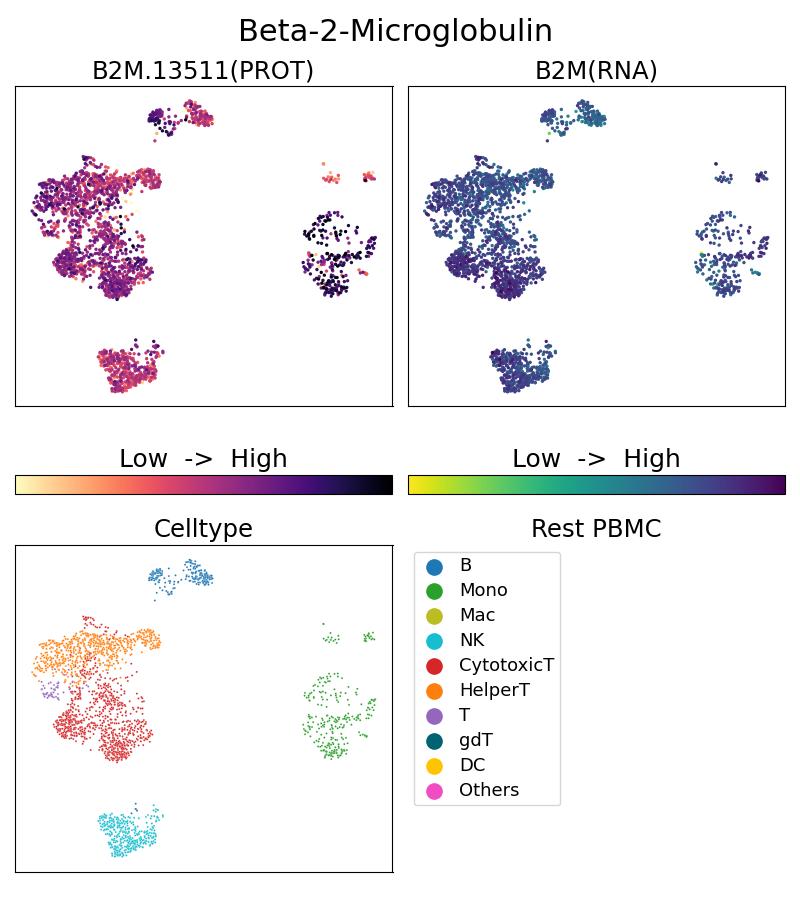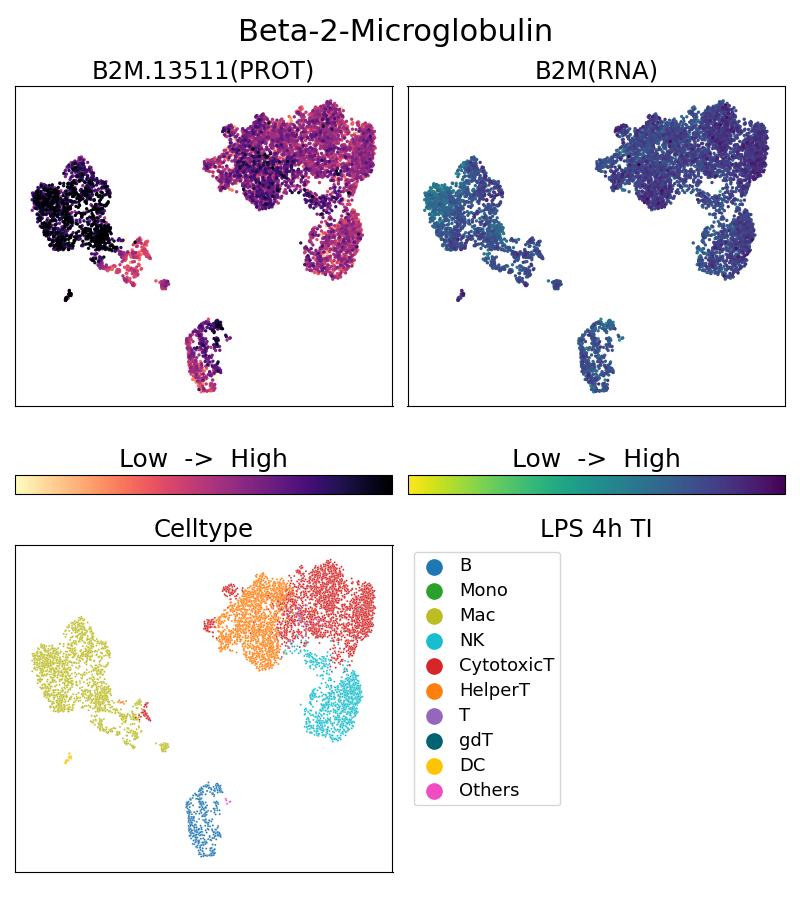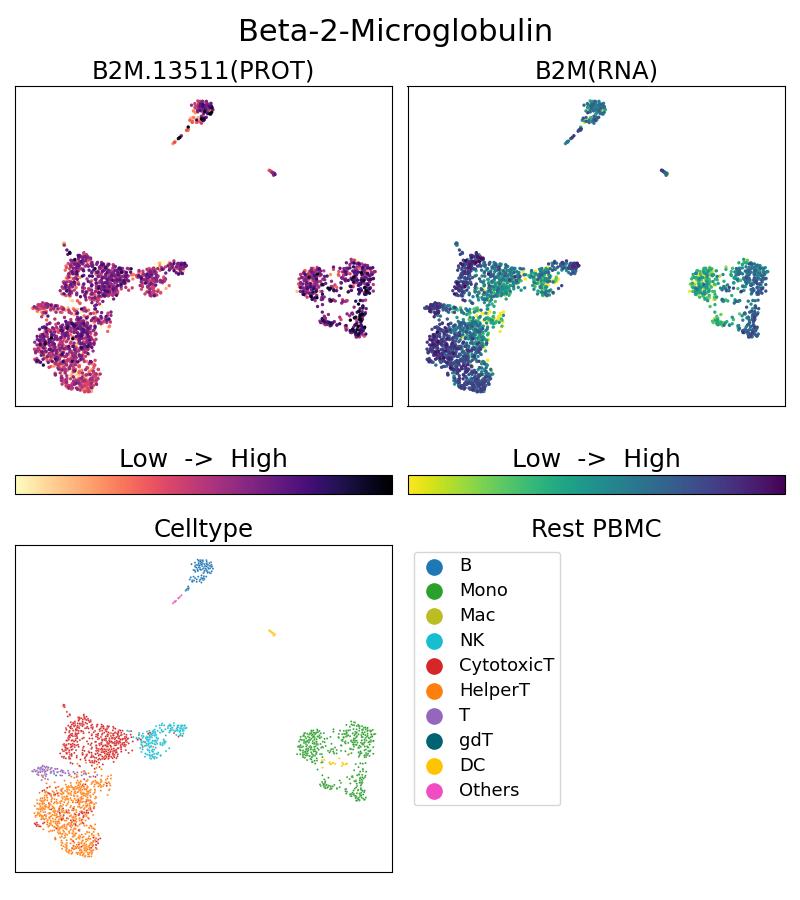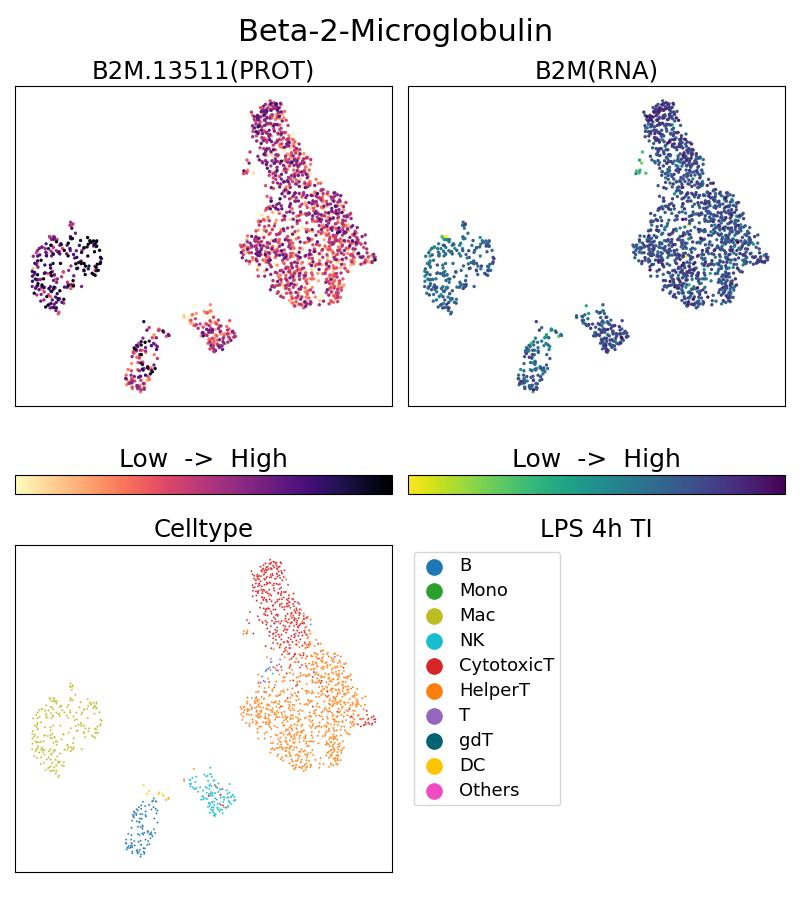Anticorps Polyclonal de lapin anti-Beta-2-Microglobulin
Beta-2-Microglobulin Polyclonal Antibody for Single Cell (Intra), Single Cell
Hôte / Isotype
Lapin / IgG
Réactivité testée
Humain
Applications
Single Cell (Intra), Single Cell
Conjugaison
5CFLX Fluorescent Dye
N° de cat : G13511-1-5C
Synonymes
Galerie de données de validation
Applications testées
| Résultats positifs en Single Cell (Intra) | 10x Genomics Gene Expression Flex with Feature Barcodes and Multiplexing product. |
| Résultats positifs en Single Cell | 10x Genomics Gene Expression Flex with Feature Barcodes and Multiplexing product. |
Dilution recommandée
| Application | Dilution |
|---|---|
| SINGLE CELL (INTRA) | SINGLE CELL (INTRA) : <0.5ug/test |
| SINGLE CELL | SINGLE CELL : <0.5ug/test |
| It is recommended that this reagent should be titrated in each testing system to obtain optimal results. | |
| Sample-dependent, check data in validation data gallery | |
Informations sur le produit
G13511-1-5C cible Beta-2-Microglobulin dans les applications de Single Cell (Intra), Single Cell et montre une réactivité avec des échantillons Humain
| Réactivité | Humain |
| Hôte / Isotype | Lapin / IgG |
| Clonalité | Polyclonal |
| Type | Anticorps |
| Immunogène | Beta-2-Microglobulin Protéine recombinante Ag4433 |
| Nom complet | beta-2-microglobulin |
| Masse moléculaire calculée | 119 aa, 14 kDa |
| Numéro d’acquisition GenBank | BC032589 |
| Symbole du gène | B2M |
| Identification du gène (NCBI) | 567 |
| Conjugaison | 5CFLX Fluorescent Dye |
| Forme | Liquide |
| Méthode de purification | |
| Tampon de stockage | PBS with 1mM EDTA and 0.09% sodium azide |
| Conditions de stockage | 2-8°C Stable for one year after shipment. 20ul contiennent 0,1% de BSA. |
Informations générales
Beta-2-microglobulin (B2M) is a component of MHC class I molecules, which are present on the surface of nearly all nucleated cells. It can be found in body fluids under physiologic conditions as a result of shedding from cell surfaces or intracellular release. B2M has various biological functions, including antigen presentation. Investigations reveal that increased synthesis and release of B2M are present in several malignant diseases.





